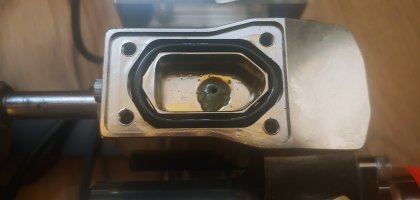Kek700
Premium
I have some HPP PRX pedals, I really wanted to see if all the positive reviews are justified about hydraulic pedals.
Unfortunatly mine have a lot of initial stiction, you could say a notch‘y start.
After that they are rather good, but every time I press them I have to go through a notch‘y start.
This is very annoying, it spoils their overall affect.
Has anyone got an answer, I have tried silicon spray, i just put it on the master and slave push shafts to some affect, soon back to that notch’y start.
Sorted.
Unfortunatly mine have a lot of initial stiction, you could say a notch‘y start.
After that they are rather good, but every time I press them I have to go through a notch‘y start.
This is very annoying, it spoils their overall affect.
Has anyone got an answer, I have tried silicon spray, i just put it on the master and slave push shafts to some affect, soon back to that notch’y start.
Sorted.
Last edited:











